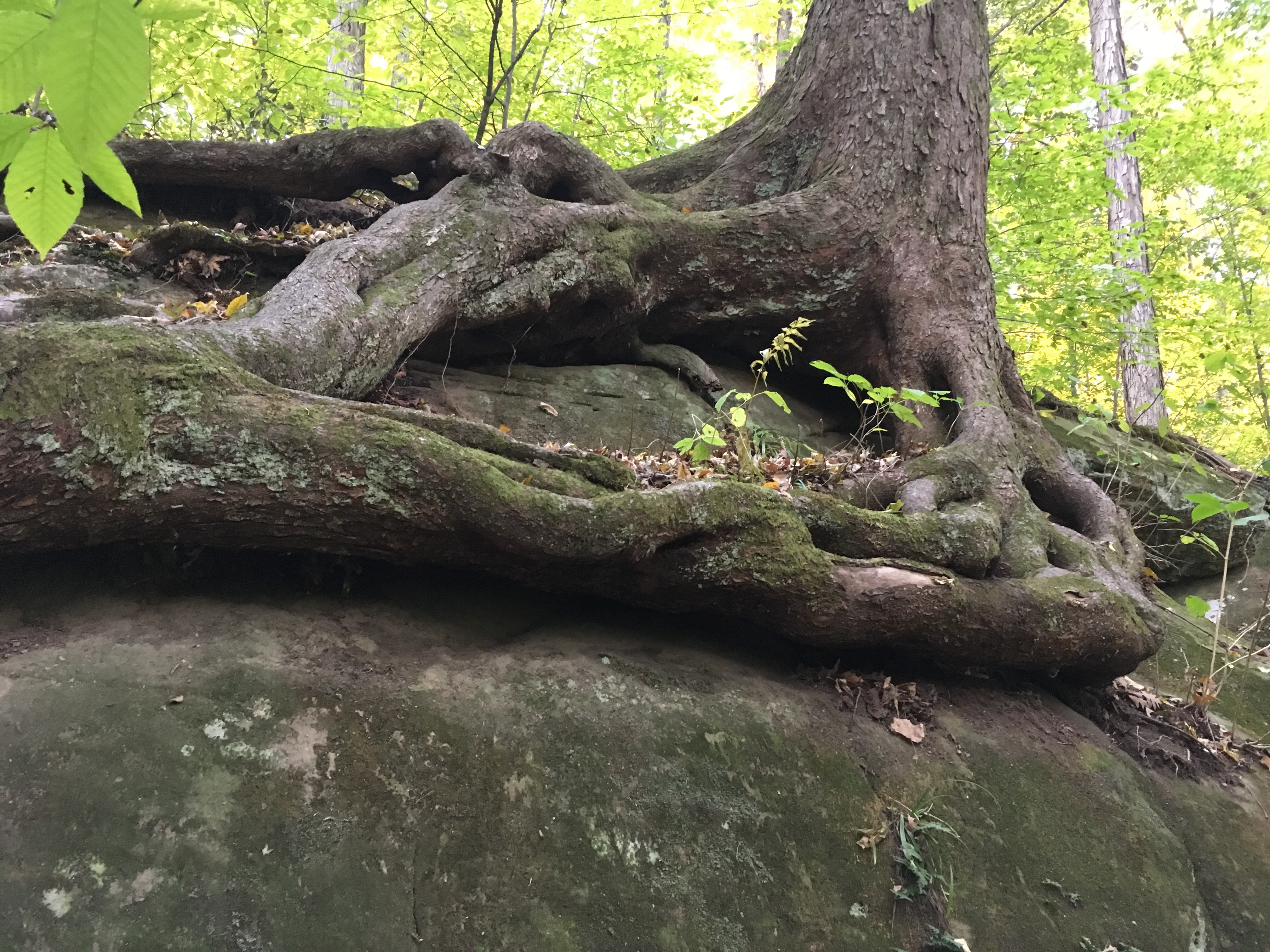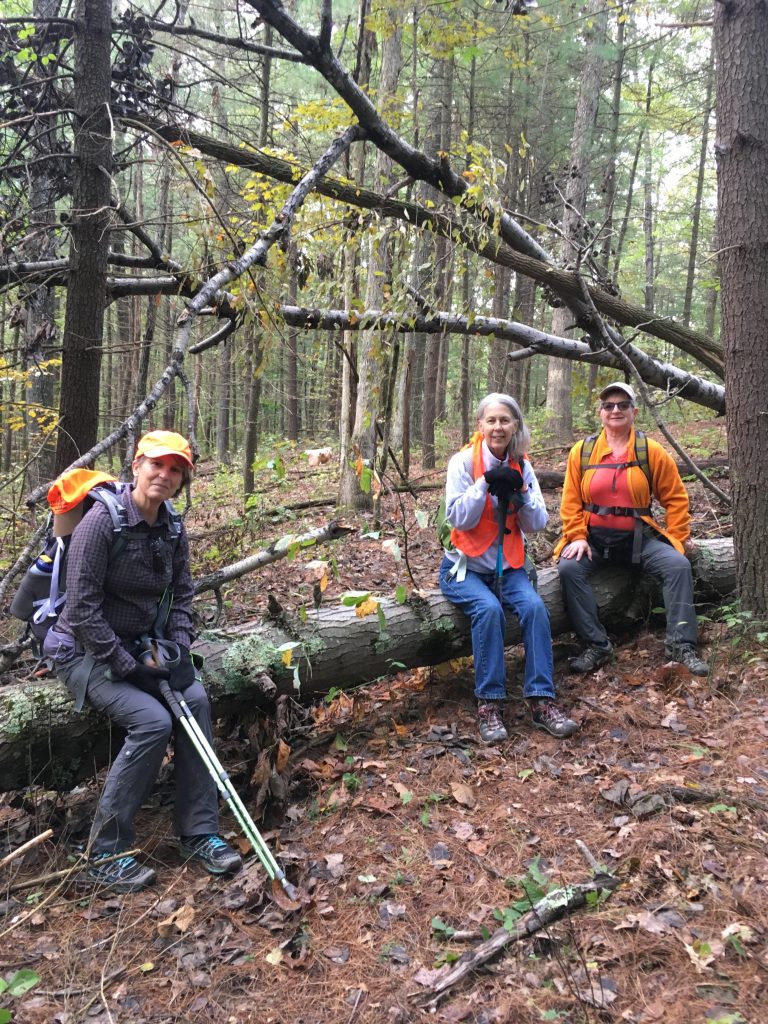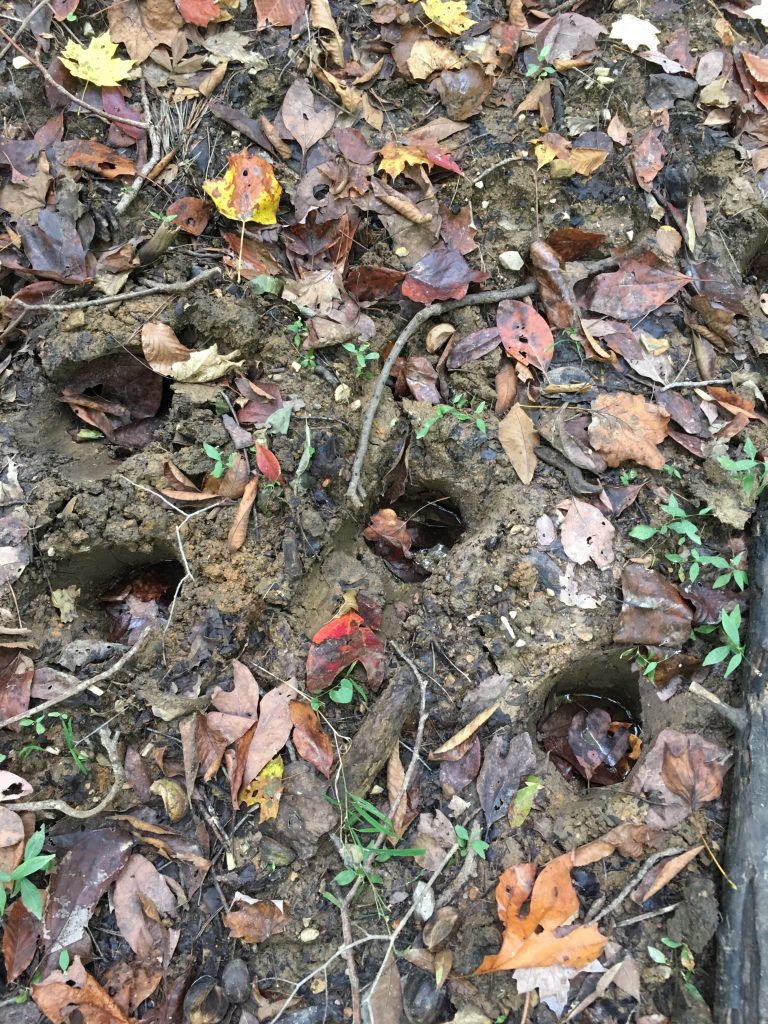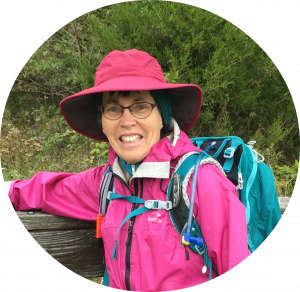The question
The question was bound to come sooner or later. I’ll certainly hear it often as I make my way along the Camino, I thought. I’ll be asked over and over again, if for no other reason than as a conversation starter: “Why are you doing the Camino?” The inquisitor will ask this as a way of comparing the rationale behind his or her journey with the motivation behind mine. As if to say “I get it that you want to do the Camino–doesn’t everyone?–but I’m interested in knowing more about just what has moved you.”
I’d already been telling people of my plans for several months, however, and the reaction I got was never “why?” but rather: “Cool!” “Wow!” “Oh, my husband and I really want to do that.” “The whole thing?” “Do it, Katy! Do it while you can!” “Wish I thought I could do that!” and the occasional “What’s the Camino?” A few weeks ago, however, when I completed reading one of my blog posts to fellow participants at a monthly meeting of our Life Writing Workshop, Victoria finally posed the anticipated question, but with a slightly unexpected tone: “Why are you going to do this if it’s going to be so hard?” The post I had read, among other things,, had cataloged a list of challenges and fears and potential obstacles ready to get in the way of my successful completion of the journey. I suppose that led Victoria to think that such a pilgrimage would be the last thing in the world she would want to undertake and left her wondering why on earth I would do so.
Her question, in turn, led me to realize that I’d better be prepared not just for the question, but for the answer I’ll give to the curious. I stumbled. hemming and hawing a bit, returning her question with my own: “Do you want the two-minute version or the two-hour one?” Meanwhile, the group’s facilitator helped me out with a quick “Because it’s there!” (Actually, there’s a lot of truth to that statement, but more on that later.)
Thankfully, it was time to move on and give someone else a chance to present a reading, but I promised myself that I would give serious thought to how I might reply to both the curious or the incredulous, and that I would find a happy medium somewhere between the two-minute and the two-hour explanation. For me, it is not really one question, but a series of them. I share with you the results of my thoughts. If “because it’s there!” satisfies you, consider skipping the rest of this post. Otherwise, read on.
Why walk?
If you are a walker yourself, you know why: you walk because
- you have two feet!
- you know how to do it, walking being something you’ve been practicing and perfecting possibly since before your first birthday!
- it is the best way to get in touch with your thoughts and feelings, the best way to clear your mind or, conversely, to fill it as your ideas come into focus
- there’s no better way to take in your surroundings and listen to what they have to tell you
- walking is cheaper than seeing a psychiatrist
- some of the greatest thinkers of all time recommended it: Hippocrates, Thomas Jefferson, Thoreau, Lincoln, Nietzsche….
- some of your heroes did it; to the above-mentioned names add: Gandhi, Martin Luther King, Jesus Christ (and just about everyone else who lived before modern modes of transportation came along)
- it’s good for your heart
- it’s an inexpensive pastime
- duh! Isn’t it obvious?
I don’t recall a time in my life when I didn’t enjoy walking. My first solo walk, or so I’ve been told, was in Ft. Lauderdale, Florida. I was three-years old and, apparently, I strutted off dressed in my Easter Sunday finery, determined to have my own private parade. I know this much: it was not the last time I got lost while out on a hike….
I cannot lie: it was not uphill both ways in two feet of snow, but I did walk daily to and from kindergarten (one mile total), grade school (home for lunch, so four miles total), and high school (about 3 miles round trip). Getting from dorm to classroom in college was just a matter of walking some long corridors and climbing several flights of stairs, but once again in grad school I was hotfooting it from my living quarters to and around the Indiana University campus. Only in Madrid did I deign to use public transportation–metro or bus–though I suspect I may have actually walked more during the two academic years I spent there than at any other time in my life. I suppose this is the place to mention that during my teaching career, I also walked to and from campus on a daily basis; in all my years at IU, I never had a parking pass or a bus pass.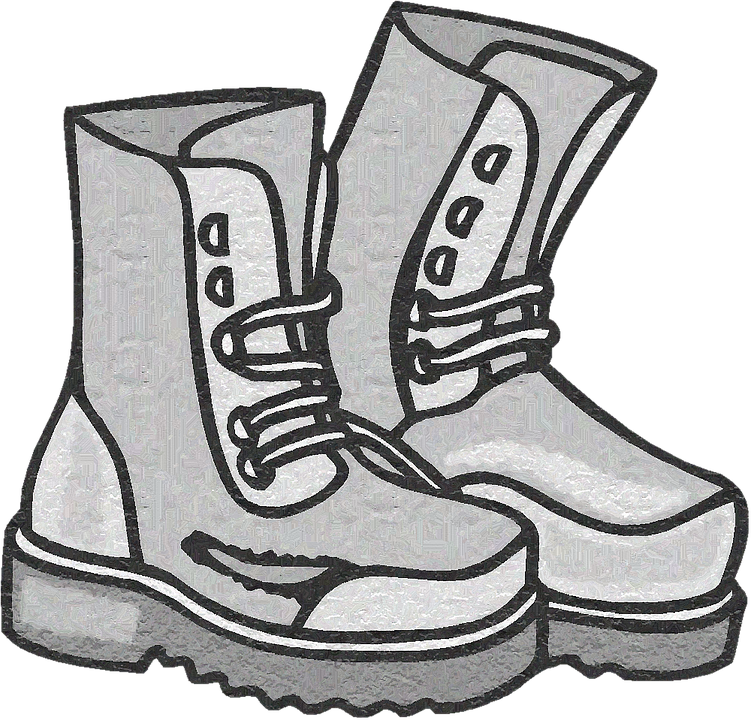
And summertime! I smile picturing walking down the two-track sandy road leading to our cottage in Newaygo, Michigan. How we managed to scare each other witless when we attempted that walk on pitch-black evenings! How we loved walking to the candy store further down the lake from our cottage! How lost we got one day when the eldest ones in our straggly group should have known better than to lead us on a super-long hike; in those by-gone days, long before cell phones or even private lines, it was a bit tricky to get in touch with our parents so they could come rescue us…. Up in Minnesota, I was the one who talked my Daly cousins into walking from their farm miles south of town to their Pfeffer cousins’ house on the north side of Mapleton. Though these cousins had lived those 6 or so miles from one another all their lives, it had never occurred to them to walk to one another’s houses. I was the instigator.
Still am. I like to set up “walk ‘n talks” with friends; lunch dates are fun, but the walks can be exhilarating. I belong to several walking groups, including WW (Walking Women) and WOW (Women of the Woods). Never stayed in a campground I didn’t want to check out by foot; rarely have been in a town I didn’t want to explore a pie. This is absolutely true: my favorite exercise might be biking, but walking is a close second and a type of exercise which, regardless of the time of year, can be done every single day… with the right clothing.
If you have received emails from me during the last five years or so, you will have noticed that my “sign-off” includes this quote from Ram Dass:
“We are all just walking each other home.”
So true! Side by side. In good times and in the not-so-good ones. Why walk? Why on earth not? If you possibly can. When you can. While you can. Where you can. Ah, where? Where indeed?
Why Spain?
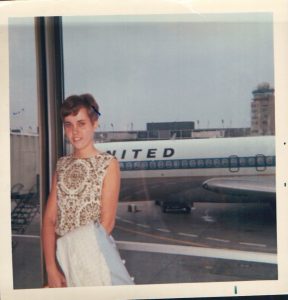
June 1967: ready to fly the friendly skies to Europe for the first time
I was 17 years old the first time I traveled to Spain. I had just finished my freshman year at Clarke College and was lucky enough to join two BVM sisters, a bunch of college coeds, and one congenial male student whose name I want to say was Ed, for a month-long program of culture and language at an institute in Santander (northern Spain) followed by a three-week tour of the rest of the country by coach. An amazing trip that pretty much set the course for my future studies. Eye and mind-opening on every level. I know I felt mature at the time, but now I smile to think back on some of the experiences of the young girl I really was. I remember:
- drinking several glasses of sangria on a hot summer afternoon at an open-air restaurant and coming out with what I believe is the only “drunken slur” of my entire life (if you must know, I was speaking in Spanish and referred to our country as the “esclavos unidos” [United Slaves] instead of “Estados Unidos”
- taking up residence in dorms that had once served as horse stables of the royalty during their summer residency in the north
- sitting on the patio of said residence with a bunch of Irish seminarians–students like ourselves–who entertained us with laughter, guitars and their splendid voices
- eating a farewell meal on the top floor of the Hotel Plaza where flaming Baked Alaska was served to us by the ever-attentive waiters
- yes, we were in Pamplona FOR the actual running of the bulls! yes to the Prado! yes to aqueducts and royal palaces and flamenco and cathedrals!
- tours in Toledo, Cordoba, Seville, Granada, Segovia, Salamanca, Avila! Culture, history, language: I absorbed it like a parched land when rain finally falls. I was hooked!
A bit more than a year later, I returned to Spain for a “Junior Year Abroad” experience. I had turned 19. I was on my own. Marquette University opened up its overseas programs to students from other institutions. Put yourself for a minute back in the “old days,” a good thirty years before most folks began using the Internet to figure out anything and everything. I don’t remember now how the details of my itinerary all came together, but neither do I recall feeling any stress about the travel arrangements. No doubt I’d be shaking in my boots if I were to attempt something similar now, some fifty years later; it would be hard enough with Google or a similar search engine, impossible without! Think about it: I took the train to New York, found my way to the harbor and boarded a ship filled entirely with European-bound students, three of whom became my bunkmates for the 7-day journey.
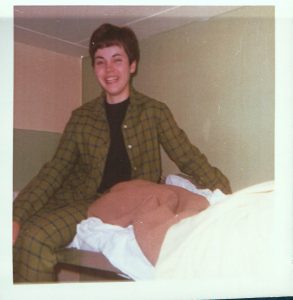
August 1968: on the top bunk of steamer that will bring me to Europe
Once in the port of Le Havre in northern France, I made my way by train to the Spanish border, transferred to a train heading to Madrid, and eventually found my way to O’Donnell Street where I knocked on the door of the “boarding house” headed by Encarna Bujalance, or la señora as we called her. That was to be my home for the next 9 months. How vividly I recall being introduced that evening to all the rules of the house–most of which I didn’t totally follow– and then settling in with my roommate from Venezuela who spoke a Spanish I could barely understand and who proceeded to tell me all the details of her life. Rosalba’s monologue was broken only occasionally by questions for me. I smiled–or I hope I did!–nodded, and prayed that those questions were all rhetorical because I barely had a clue as to what she was talking about. All the above without shedding a tear…. Or have I just conveniently forgotten that detail?
I grew up that year, no doubt about it. Though I hail from Chicago, I had never really spent time negotiating a big city. I had never had such independence. My Spanish improved by leaps and bounds. As did my ability to use the metro, to secure theater tickets, to ignore piropos–remarks made by men, mostly unwelcome, but frequently poetic and charming in their own way–, to deal with the “come back tomorrow” red tape so typical of doing any kind of official “business” in Spain. I learned to drink espresso and the occasional chato o caña (small glasses of wine or beer), to call for the portero to let me into the apartment building late at night. I learned that men can dress as women, that I could cause a sweet boy from Connecticut to write poetry to and about me, that if you eat pastries every day you gain considerable weight, and that you had better beware what kind of diet pills are sold in Spanish farmacias because the ones I got–the ones that had me sometimes energetically walking from one end of the large metropolis to the other–contained amphetamines. I learaned that reading contemporary plays was a really super way of learning colloquial language, and that “constipado/a” did not mean “constipated” and when you told someone you were really “embarazada” you were not telling them you were very embarrassed but rather that you were quite pregnant. I discovered that as a single female I could hacer autostop [hitchhike] more easily than when I attempted it with two other women, and that trying it with a male companion was an exercise in frustration. I learned that life under a dictatorship–Franco was still in power–meant safer streets and

THE ID that gained me entrance into the Facultad de Filosofia y Letras but not into any other School/Facultad at the university. Big Brother Franco was watching….
less crime, but one of the prices we paid was the need to pull out our student ID cards which identified us as members of a particular school (or facultad) before the armed guards would allow us access to the classroom building, a building in whose student union groups of more than three or four were considered suspect. In the end, perhaps the most important lesson I learned just might have been that I didn’t hate vegetables after all! Hunger broadened my horizons and my palate has been grateful ever since.
Fast forward four years. It’s my third year as a graduate student. I’m back in Spain. I remember this about the night before I left home for the academic year: It was about 10:00 pm when I finished typing a very long and slightly overdue paper on some aspect of the greatest piece of literature of all time–pardon my prejudice, but I’m talking about Cervantes’ Don Quijote de la Mancha–. Only then, as the midnight hour approached, did I begin to pack for the 9-month trip! Was there a train involved this time or did I make my way exclusively by air? I don’t recall. Definitely no ship. Once again an address, a door on which to knock, the anxious wait for that door to reveal my new living situation. This time, I found myself in the midst of a sweet family: Trini, her husband Cresencio, their 16-year-old son Nacho and Alberto, a Mexican teen and, like myself, a boarder. Though the room and board I paid was essential for the family’s livelihood, they came to love me as if I were one of their own, and the feeling was mutual.
This was, in many ways, a quieter year. During my previous stay I had traveled the country: I hit the famed sanfermines in Valencia and spent Holy Week in Seville, awed by the many processions and religious reenactments; I saw the windmills of La Mancha and 17th-century open-air theaters where rowdy audiences of long-gone days had enjoyed the plays of Tirso de Molina and Lope de Vega and Calderón de la Barca; I marveled at the so-called “hanging houses” of Cuenca and, throughout the country, never tired of seeing walled cities, Moorish temples, and ancient Roman bridges. This time I was much more sedentary, finding my seat in lecture halls, theaters, libraries, and cafes. One day, my knees knocking, I found myself seated in front of Antonio Buero Vallejo, a renowned playwright and member of the Royal Spanish Academy. We had coffee together in his piso [apartment] and I handed him a copy of my MA-thesis-turned-book which dealt with four of his plays. (No doubt he rolled his eyes when I left, timid thing that I was; no doubt however much deodorant I used that day, it wasn’t enough!)
During my first year of graduate school, I began taking classes in Catalan language. While in Spain, I delved into medieval Catalan literature and did my best to record my reactions to it in the language itself, sending long reports back to my Catalan professor at IU. In those days–we’re talking 1972-73–with Francisco Franco still at the helm of Spanish government, the Catalan language was banned from being taught in schools. Interestingly enough, I got wind of a free extra-curricular class offered by Catalans for Catalans to teach them how to spell and write in a language which they already spoke quite well. The teacher was delighted that I wanted to participate. Those classes led to invitations to parties in the homes of some of the students, many several decades older than myself. Spaniards spend most of their socializing time “out and about,” so any invitation to a home was special. Of course, I was already “at home” with my Spanish family and was invited sometimes to the homes of their relatives. Those were memorable times.
Then, from one day to the next, it was over. It was early May, three weeks or less before the end of the semester. I got the call I had feared on a daily basis, the dreaded but expected call that had kept me near the phone rather than cavorting around the country. My father had had a stroke in February. I returned home in March for a week, but when the doctor said that my dad might linger for months in the same near-comatose state, it was decided that I should return to Spain to continue with my courses. Now word came that Dad had died. The following day I was Chicago-bound.
Why Spain? Isn’t it obvious? Spain was my first love. My initiation into the world of romance. The flame of that passion, I’ll grant you, has flickered and diminished in the interim, has been replaced by a husband, by children, but… doesn’t Spain deserve a bit more from me after that abrupt departure forty-five years ago? A more proper, gentle, and loving leave-taking? A more fitting bookend to that first trip? The stunning beginning of this relationship formed when I was 17 needs a meaningful closing as I approach 70.
My husband tells me that once upon a time I told him we would go to Spain together, that I would show him my favorite haunts. I can’t say that I remember telling him that, but no doubt I did. I do remember thinking that, having spent such long periods in Spain and having known the country so intimately, I would be very disappointed with the typical 10-day tour. I also remember thinking that Ken might feel very out of place having to depend on and be lead around by his wife the Spanish-speaker. Besides, we were raising kids, then participating in fabulous bike tours all around the US and also in Canada. For those and, I suppose, other reasons, Spain never happened for us.
Forty-five years. It’s time to return.
Why 2019?
This is an easy one. A no-brainer. 2019 because:
- good ideas should be seized and acted upon
- neither my body nor my mind nor I are getting any younger. I’d better strike while the iron is at least lukewarm
- the husband who will be caring for hearth and home and yard and vehicles and every other eventuality isn’t getting any younger either; if I postpone the trip he might just decide he’s not willing to give me up for a couple of months
- the Camino prep has taken over most of my waking hours; the only way to get out from under is to JUST DO IT ALREADY and put it behind me
- my daughter wants to know when we’re going to go hiking together in Ireland. Let’s get the Camino checked off the list so I can focus on something else
Why spring?
I know, I know. Fall sounds better, doesn’t it? Drier. Warmer. More colorful: fields still green, golden wheat blowing in the breeze, grapes lush and ready to harvest…. The in-earnest training could be done during summer months when daylight lasts forever and there’s no need to worry about staying warm enough. All so true. All pointing to a trip in autumn. Yes, but:
- Ken and I enjoy biking and camping together during the summer and fall; neither of us would want to forego those pleasures so that I could train for and then walk the Camino during the best months of the year
- Winter is such a “blah” time; betcha anything my training and planning will make January, February, and March just fly by. Cabin fever doesn’t stand a chance!
- I have a colorful water-repellent hat, a bright rain jacket, and a cover for my backpack. Let it rain! Who cares! I’ll witness the miracles of spring growth up close and personal. The mud might just bring out the kid in me.
- Maybe the Camino won’t be so crowded early in the season. One can hope.
- Virginia started her trek in April, and so did Antigone; they survived the occasional 32-degree mornings. So will I!
- I talked about “romancing” Spain, wooing her, trying to win her hand again. Everyone knows those are springtime activities.
Agreed?
But WHY WHY WHY do this 500-mile pilgrimage at all?
That is, really, the crux of the matter, isn’t it? I’ve been stalling, frankly, because it is easier to negate possible reasons for my Camino than it is to rationally explain or even be absolutely sure of the actual ones. I am not going as a penitent, though surely there are aspects of my life for which I might ask forgiveness. I am not going to beg for a resolution for any specific situations, no trade-off or bargaining with the Almighty. It’s not that I’m a glutton for punishment or that I want to shirk my usual responsibilities so I can have “a fling” or “relive my youth.” It can hardly be said that I feel any particular devotion to St. James (“Santiago” in Spanish) whose bones, legend has it, are buried in the cathedral in Santiago. And I’m very definitely not setting out to break any speed records! What, then?
Maybe John Woodcock, facilitator of the Life Writing workshop, said it all when he responded, for me, “because it’s there.” Yes, because it’s there, and also because
- I love challenges and am happiest when I set goals and take the steps necessary to work towards meeting those goals. Yet I’m realistic and practical. I love the idea of doing a “through hike” on, say, the Appalachian Trail. Wow! Wouldn’t that be something? In theory, yes. But in practice? No, that’s not something for me. I need goals that are within my reach. When I heard that Virginia–a local Bloomington woman–was, just before her 76th birthday, heading to Spain to do the Camino, a light went on in my head: maybe, just maybe, I could do that….
- I love the idea of having time to think, to reflect on where I’ve been and where I’m going. Not geographically, you understand. A kind of pause, away from the demanding to-do lists and the obligations that come from having a variety of roles. A chance to step out of those roles for a bit and look at them from the outside, consider how they might be polished up, redefined, some perhaps set aside, others taken on.
- Time is my biggest enemy; it’s a great gift, but yet one that disappears before my eyes. I love the thought of having, on the Camino, hour after hour after hour with nothing more to do than to put one foot in front of the other along a path or road while the mind travels immense distances in both time and space. My intention is to fill a good many of those hours, on a daily basis, with conjuring up the people I love, along with their hopes and aspirations, their frustrations and fears and insecurities, their longings, even their short-comings, and holding all of that close to my heart. Call it “prayer” or “healing thoughts” or “best wishes” or “lifting up”…. Call it what you like, but I really look forward to that. One by one, as if fingering a rosary, I’ll call forth families and friends, straining to think of classmates from the 50s and 60s and 70s, colleagues from the 80s, 90s, and beyond, bringing to mind friends from book group, writing group, drama club, biking and hiking buddies, friends from church, neighbors new and old, and, certainly, the many loved ones who have passed on. I’ll be in such good company!
- Then there’s the opportunity the Camino provides to meet folks along the way, pilgrims and those who serve and come to the aid of the pilgrims. I’ve been told that for most people, meeting fellow peregrinos ends up being the most memorable part of the trip. I’ve experienced something similar to this on bike tours. When we are free of our usual preoccupations, we have the time and energy to listen to others and share with others in ways that surprise us. I’m not setting out on the Camino for that reason, but I expect it will be a significant, extremely important aspect of the journey.
- I am a huge believer in the power of and the grace afforded by the habit of gratitude. I expect my Camino will give me lots of time–and ample reasons– to hone my skills as a practitioner of thankfulness.
- I give all too little mind time to the problems of the world. “You’ll sleep all the better for it,” you might say. I suppose that is true, but it is my intention to dedicate a portion of my walking time to considering those problems. Not with the purpose of solving them–as if I could!…–so much as to acknowledge them and, in some fashion, join in solidarity with the many, many whose lives are so very less privileged than my own. To do so, for me, will be a kind of prayer.
- I am thoroughly enchanted by the idea that pilgrims have been walking to Santiago, from many different points of Europe, since at least the 10th century! That’s over a thousand years and many, many thousands of seekers–each with his or her own personal reasons–intent on reaching the goal: Santiago. Prior to the Christians, it is thought that the route was walked by those following the Milky Way to Finisterre, the supposed “end of the earth.” How not to be inspired at the idea of stepping where so many others have trod, each bearing hopes and dreams and sorrows?
- I am far from a minimalist and, I’m afraid, I mostly pay mere lip service to “simplicity” and “letting go.” This trip will offer a forced opportunity to put some muscle into the notion of paring down and “having more with less.” I don’t expect miracles in that regard, but progress at least. Surely more mindfulness about possessions. Awareness, certainly. (And, say, don’t get me wrong: I’m open to miracles! The everyday kind and the major ones, too! Bring ’em on!)
- I’ve heard over and over again that the Camino is “safe.” I couldn’t conceive of a similar adventure, and one with such a strong infrastructure as this one, in many other countries. The learning curve for carrying out this plan is minimal; there are guides and websites and how-to books a’ plenty. Compared to some of the extreme sports or pursuits we have seen on YouTube videos or in the clips shown at the Banff Mountain Film Festival World Tour, the Camino is tame. With proper preparation and a bit of luck, it is doable. Even by seniors.
- Bottom line: I feel called to do this. The Camino feels like something I am supposed to do, and to do well. It is hard to explain, but the call is very real and begs not to be ignored.
I guess we could put all those reasons in a big pot and stir them. A Katy’s Camino soup. A hodge-podge of physical, mental, spiritual reasons which, hopefully, ends up to be a tasty dish indeed.
My friend Mary Beth and her husband walked ten days on the Camino a few years ago. She advised that I not put too many expectations on my walk. “Let the walk itself show you what you need to be shown. Go into it with an open mind and see what happens.”
Why walk? You’re right, John, “because it’s there.” Or “just because.” Or, as Mary Beth would have me believe: I’ll find out why. Ask me when it’s all over.
And why write about it?
I’ll again return a question with a question: why not write about it? Writing helps me to focus, to remember, to get in touch with my thoughts and feelings, to capture moments that might otherwise be lost. It’s what writers do. Or at least what they want to do. The proof will be in the pudding. Will I have the time and the wifi and the phone juice to mix up the pudding? And how will it “set” with my readers? (“‘Readers,’ you say? Do you really think anyone is going to read this?” Oh! Well…. That’s the least of my worries.)
I’ve referred to this trip to Spain as a kind of bookend, “propping” me up from one side as I round the corner of my 70th birthday, whereas my initial trip to Spain gave me the support I needed to move into my young adult life and my career. Bookends. Ah, do you remember the Simon and Garfunkel song of that title and the oh-so-true words with which it concludes?
Preserve your memories
They’re all that’s left you.
And so, I will write; I will preserve those memories as best I can.

